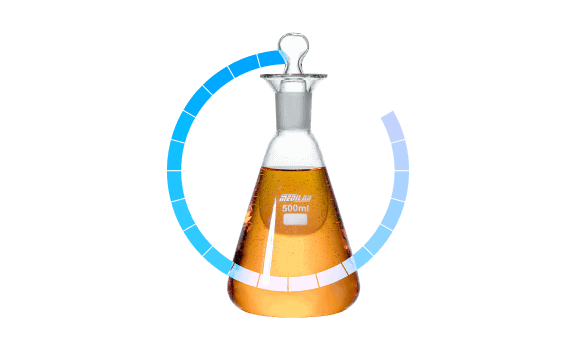To view charts and graphs, download the report by clicking the link at the top right or bottom right of the page.
In the wake of a tumultuous period marked by the COVID-19 pandemic, the chemicals industry, particularly within the middle market segment, has navigated through a series of ups and downs. Deal volumes reached historic highs in 2021 and early 2022 driven by a combination of moderate inflation, strong economic activity, elevated company earnings and, most importantly, decades-low interest rates. However, the subsequent period 2022 and 2023 witnessed a softening in mergers and acquisitions activity, underscoring a time of recalibration and cautious optimism. (Chart 5) As we edge into 2024, there are emerging signs that suggest a potential uplift in deal activity, albeit from a subdued base established in 2023.
Harbingers of Growth
Resilience in Demand Since December 2023, the demand for specialty chemicals has shown unexpected strength. Despite the cautious stance adopted by companies due to the underwhelming performance in 2023, there is a burgeoning hope that the current positive trends will persist, setting the stage for a more robust 2024.
Financial Performance Stabilization The COVID-19 era introduced unprecedented volatility in financial performance, with companies experiencing dramatic fluctuations in revenue. As we move into 2024, there is an anticipation of reduced volatility, suggesting that earnings may now more accurately reflect a true steady state. This stabilization is expected to enhance the perceived quality of companies in the market and facilitate deal-making by improving the predictability of earnings.
Increased Interest in Re-shoring Production A confluence of factors, including heightened U.S.-China tensions, global shipping disruptions, and reduced Panama Canal traffic, is prompting a reconsideration of production locations. The trend towards re-shoring production to North America not only diversifies supply chains but also opens acquisition opportunities as a viable alternative to new construction.
Stable Financing Prospects At the outset of the quarter, optimism surged following indications from the U.S. Federal Reserve about potential interest rate cuts. However, recent statements suggest officials perceive minimal need for immediate rate reductions, hinting that any adjustments in 2024 might occur towards the year’s end. Investors are now anticipating only one or two cuts by year end. While interest rate reductions typically stimulate investment, the primary immediate impact will be a reduction in uncertainty. Investors are cautious of market fluctuations, so clarity from the Federal Reserve will signal a favorable moment for pursuing acquisitions under more stable financing conditions.
Private Equity Dynamics The private equity sector is under increasing pressure to deploy its substantial capital reserves, estimated between $2.0 and $3.0 trillion. With the average hold period extending beyond traditional timelines due to pandemic-induced delays, there is growing pressure for private equity firms to execute both acquisitions and complete exits. We anticipate heightened competition for quality deals with so much committed capital waiting on the sidelines. Additionally, our analysis reveals that Non-Financial Businesses hold approximately $7.2 trillion in liquid assets, complemented by a significant $3.5 trillion in reserves held by depository institutions.
Public Company Performance and M&A
The U.S. Chemical Distribution sector continues to outperform the S&P 500. This trend is expected to persist, as the as the distribution subsector is projected to grow at a compound annual growth rate of 6.3% from 2023 to 2030, reaching $403 billion by 2030. The share prices of various chemical companies have started to trend upward as the industry is expected to see higher demand in 2024 due to the energy transition, which has been boosted by government policies. (Chart 2)
Conversely, both EV/EBITDA and EV/Revenue ratios (Charts 3 & 4) for Chemicals Distribution are trailing behind those of the S&P 500. This suggests that this sub-sector is undervalued, presenting both challenges and opportunities for M&A.
A Balanced Outlook
While these factors provide grounds for optimism regarding an uptick in M&A activity in 2024, our tempered enthusiasm is informed by the lessons of the past four years. The journey ahead, though promising, warrants a cautious approach, balancing optimism with the prudence that the recent past has instilled in us. As we navigate this evolving landscape, the focus remains on identifying and leveraging opportunities that align with strategic objectives, ensuring that optimism is matched with actionable insights and prudent decision-making.
Let’s Talk
To explore the latest developments in the sector’s M&A landscape, share updates about your business, or discover our comprehensive advisory services and in-depth expertise in the Chemicals and Materials industry, please give us a call.




